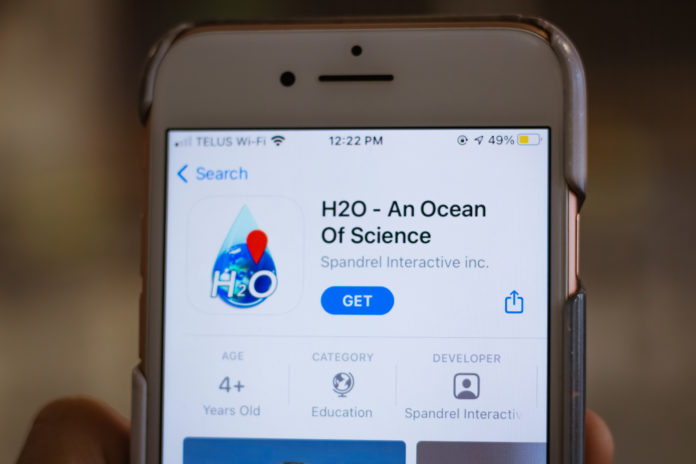

Marie Maltais, director at the University of New Brunswick Arts Centre, began her research on climate-related water issues nearly three years ago when she discovered what she was reading in news articles did not correlate to scientists’ reports.
The UNB Arts Centre began its newest initiative, H2O: An Ocean Of Science, on March 22. The app was launched on World Water Day to bring awareness to water-related issues around the world.
“What I’m trying to do here is differentiate between the sort of headlines grabbing our attention to what’s actually going on. So not going to the journalists, but going to the scientists,” said Maltais.
She referred to the Milne ice shelf collapsing and noticed a headline that read “last ice shelf in Canada collapses.” But she said when she read further and reviewed the scientist’s report, she found that wasn’t quite correct.
Maltais said the UNB Arts Centre has hosted World Water Day events for the past 10 years and this is the first year the gallery is closed.
The restrictions of the pandemic, she said, are what brought the project into realization.
“To me, it really is the way of the future … You don’t have to congregate, you can just go on your phone and participate,” said Maltais.
The app is designed as an educational tool, where red markers are scattered across a 3D globe, each detailing a water-related issue, such as pollution or glacial retreat.
Maltais said she wanted a New Brunswick-based company to develop the app, which led her to Spandrel Interactive – a Fredericton-based company that specializes in supporting Maritime organizations in their shift to digital platforms.
The H2O: An Ocean Of Science app features standard and augmented reality. Jeff Mundee, Spandrel Interactive founder, said augmented reality brings the globe into a person’s space.
“Through the phone, you can walk around, you can look over it, you can look under it. It’s physically not present, but visually present in the room,” said Mundee.
There are currently 20 location tags on the app with room to grow as more data becomes available. Each marker describes the problem, provides resources for further research and offers solutions.
Maltais wanted to ensure new data and observations could be continually applied, so the app is always expanding with new information. Anyone with the app can add in their observations, which will then be verified by Maltais.
“For each one of those entries, I’ve checked about 20 or 30 different sources and cross-checked them, and had people look at them and verify them,” said Maltais.
Though the app’s inception began with Maltais, fourth-year UNB student Meghan Sweeney helped with research in its beginning stages.
Sweeney began her research by filtering through newspapers Maltais collected, which evolved to researching global water crises such as the Great Pacific Garbage Patch and Indigenous water issues.
Sweeney said the app is important in giving a global perspective and an ability for people to learn what’s happening beyond their borders.
“It’s definitely cool to see how far it’s come … to see my work out there is really cool,” said Sweeney.”
Both Mundee and Maltais are optimistic for the future of the app and its potential for growth.
“I’d very much like to make it a location-based augmented reality in the future. It would be great to have people geo-tagging things with respect to all of this research around water,” said Mundee.
